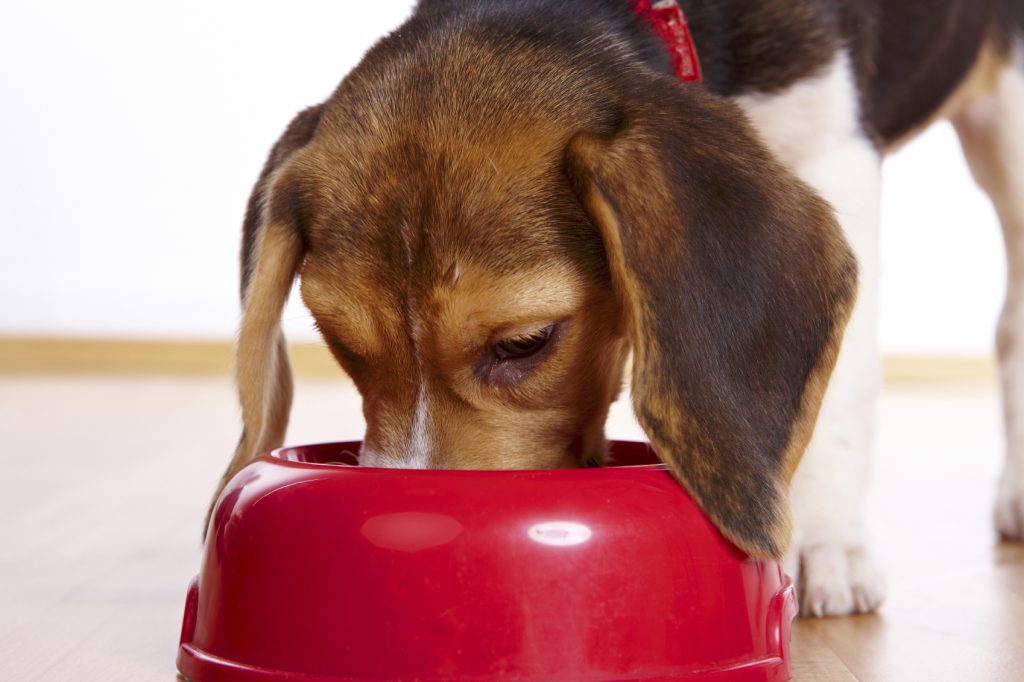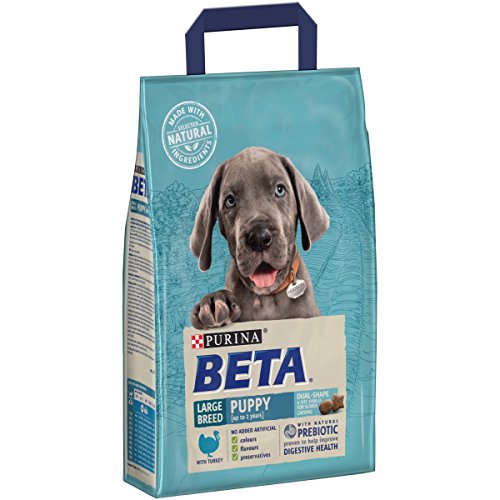
Feeding is an important part of owning a dog. Eating right can keep a dog happy and healthy, while feeding incorrectly can lead to obesity, one of the major nutritional problems seen by vets. Heart disease, diabetes and arthritis can all be related to how your animal eats, so it is important to get it right.
What should you be feeding a dog?
Dogs need a balance of nutrients to see them through everyday life. Some people are tempted to avoid the food found in shops and feed their dogs home-made food, but doing so may make your dog miss out on a particular nutrient they need.
Shop-bought food has been tested and tailored to give dogs the best balance they can get, and to keep them healthy, so it is a good idea to stick to this kind of dog food.
What brand you go for doesn't matter, as long as you read the packets and make sure you are selecting the right sort for your dog.
For example, some brands will have a product designed for a younger dog, or another for a senior dog. Use your judgement and select the best type for your dog.
As always, if you have any issue or doubts, your vet can give you more personal advice.
Buy Dog Food
How much should you be feeding a dog?
Nobody likes to think of their dog going hungry, but overfeeding can be as much of an issue in terms of nutritional health.
An adult dog should be fed twice a day, once in the morning and once in the evening.
A new puppy should be fed around four times a day. He or she should be weaned from the mother after the third week, but the breeder should have started this process, and be on puppy formula, before gradually progressing to solid dog food.
At 12 weeks, the dog should be fed three times, and then at 6 months, he or she should be comfortably fed on 2 meals a day.
In terms of how much food you should be feeding a dog, you should check the packet of the brand to determine how much to feed your dog for each meal.
When should you be feeding a dog?
An adult dog should be fed in the morning and in the evening, to set them up for the day and to see them through the night.
However, one of the most important things about the timing of meals is to stick to a schedule.
A schedule is very important for everyone involved. It means that your dog will know when he or she is getting fed, and helps them to avoid getting overweight or underweight.
If you left a bowl of dog food out all day for your pooch to nibble at whenever they wanted, they could be at danger of over eating and becoming overweight.
On the other hand, feeding behaviour is often a stark indication of a dog feeling unwell. If your dog eats heartily every time you place food in front of them, and then suddenly, one day, they are uninterested by the food and have no appetite, it will be obvious to you. However, if they are left to pick at their food all day and they don't have much of an appetite, you may not notice as easily.
It is your responsibility to stick to the schedule, so pick one that you can adhere to. If you feed your dog every day at seven, make sure that you can get up at seven on the weekends to feed them, for example.
Another key point about timings is to not feed just prior to, or soon after, exercise and training. This can lead to a condition called bloat where the dog's stomach becomes twisted. This is particularly risky to larger dogs, like the Great Dane.
Dog treats
Dog treats are a great way to incentivise your pet to train. Reward-based training is a good way to get the message across to your dog on what is good and what is bad.
However, you have to be aware of how treats may increase your dog's calorie intake for the day. If you are going to be giving them a lot of treats, consider reducing the amount they get at meal times, to try and balance their daily intake.
Furthermore, don't feel you need to overdo it on the treats. You don't have to give your dog a treat to show them affection; a good game, a play, or a good scratch can be as effective, if not more so, as they focus on you, rather than the treat.
Buy Dog Treats
Water for a dog
Unlike food, a dog should have access to fresh, clean water at all times. Refresh the water every day and make sure there is plenty of it.
Use an easily cleanable bowl, such as stainless steel one, or one of heavy pottery. However, if it chips or cracks, make sure to replace it to stop your dog cutting themselves on it.
Dog poisons!
Many foods and edibles that we eat can be harmful to dogs. One of the most common toxic substances dogs get their paws on is chocolate. But things like garlic, grapes and even some sweeteners can be harmful.
A simple rule to follow to avoid all issues is to not feed your dog anything that hasn't been designed and sold for dog consumption.
Furthermore, make sure that you don't leave food out where a dog can get to them. They can be sneaky! Leaving a box of chocolates on the floor, for example, is very likely to end in disaster.
If you think your pet has eaten a substance that may make it ill, take it to the vet as soon as possible and have them checked out.


























